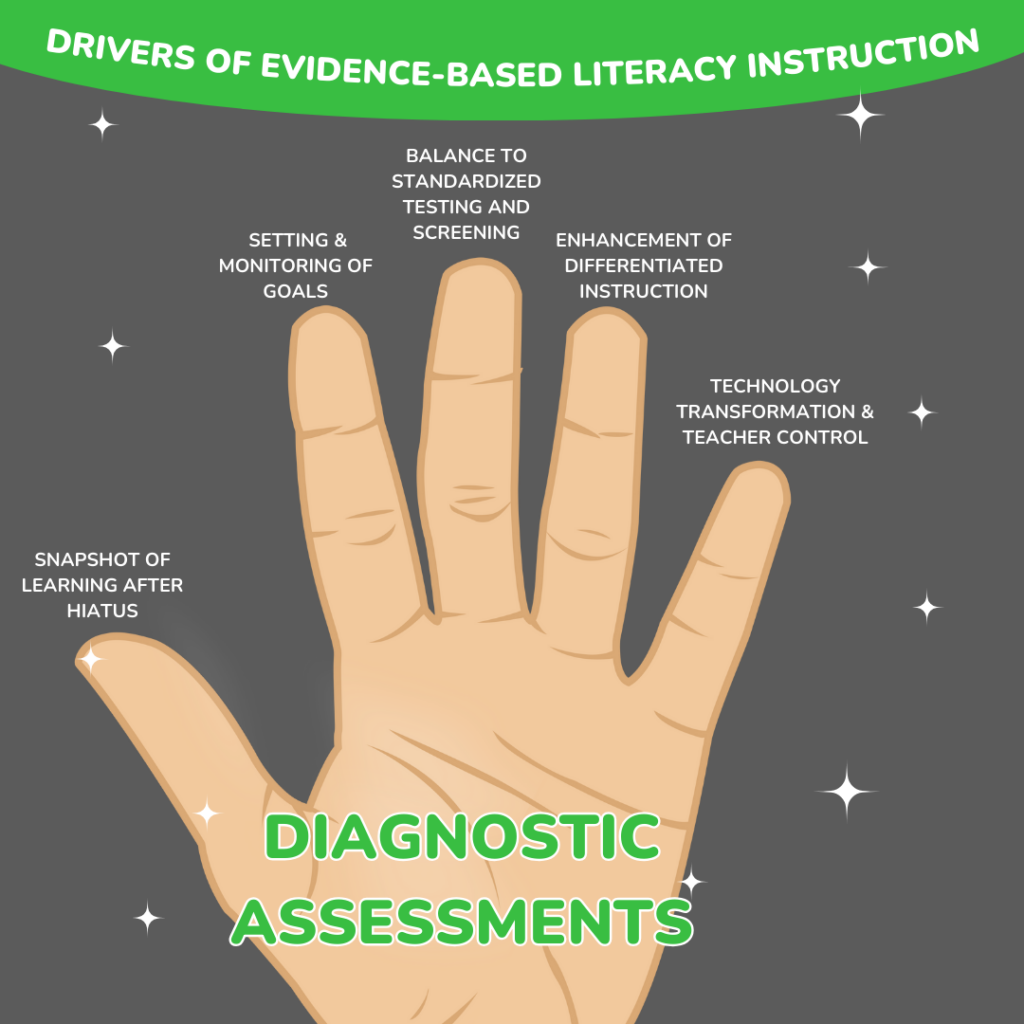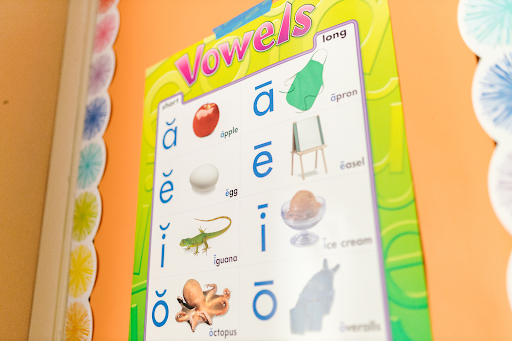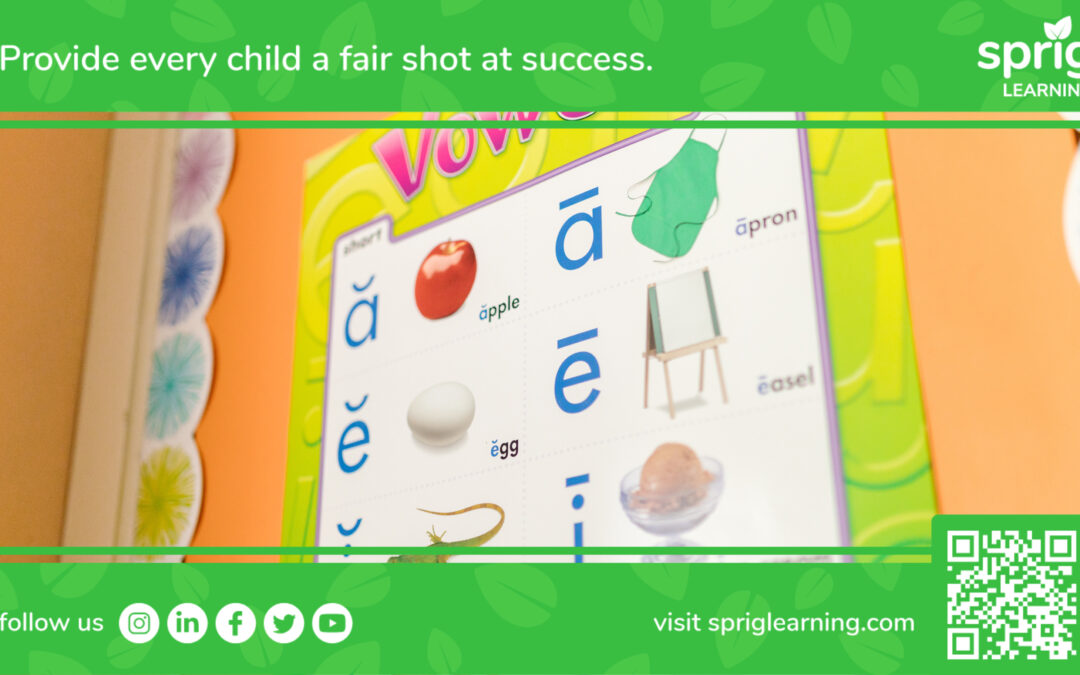In the first part of a two-part series on diagnostic assessments, Sprig Learning uncovered the essential qualities of diagnostic assessments, shedding light on their pivotal role in shaping evidence-based literacy instruction.
Re-entering this exploration, Sprig delves deeper into the nuanced aspects that distinguish diagnostic assessments as indispensable tools in the early literacy landscape.
More Diagnostic Assessment Qualities For Evidence-based Literacy Instruction

Part 2 of this series unearths further intricacies of diagnostic assessments, focusing on five more attributes that play a vital role in informing evidence-based literacy instruction.
Together with part 1, this thorough exploration of diagnostic assessments aims to equip educators with a comprehensive understanding of the multifaceted benefits these assessments have to offer.
Each is explored below. See how they cater to the evolving needs of modern classrooms.
1. Offers Snapshot of Learning After Hiatus
Amid concerns over unmet learning milestones due to prolonged school closures from the pandemic, there was a significant opportunity to identify and address student learning gaps early in their educational journey.
This is achievable through diagnostic assessments, providing a snapshot of current learning situations at the classroom or school level to guide necessary steps for student improvement.
Beyond the pandemic, there is also the concept of the summer slide, where students forget taught concepts from the previous school year. Here lies another opportunity to properly assess the students’ understanding using diagnostic assessments.
Wherever there is a risk of early learning slides due to long interruptions or unforeseen circumstances, diagnostic assessments can always restore understanding to that particular situation.
2. Allows The Setting & Monitoring of Goals
Given that literacy forms the foundation for numerous critical academic achievements, it is imperative to incorporate assessments of essential literacy skills when formulating preK-3 goals for school districts.
In the Bremerton School District, short-term objectives involved elevating the percentage of incoming kindergarteners proficient in recognizing the entire alphabet.
Under the guidance of Superintendent Bette Hyde, there was a remarkable 62 percentage point surge over eight years in the number of kindergarteners entering with knowledge of all the letters.
While standardized testing may measure the outcome of learning, diagnostic assessments measure the progress of learning, which ultimately leads to that outcome.
Thus by setting achievement indicators at each grade level, it is able to check if the progress monitoring measures are in fact producing the type of progress that is expected.
3. Provides Balance to Standardized Testing and Screening
In a meta-analytic review, it was revealed that only a quarter of the variance in academic skills on first and second-grade tests could be precisely predicted by preschool or kindergarten tests.
While standardized testing and screenings have their role in the education system, more needs to be done at the early stages of learning.
During this critical period, there’s too much at stake to inadvertently restrict a child’s potential by assessing them against a lower standard based on a standardized test conducted in a brief moment in time.
Excessive time on remediation can deprive a child of grade-level learning opportunities. While interventions are crucial for those requiring additional support, ongoing assessment on key diagnostic measures, especially foundational reading skills, is essential for overall reading proficiency.
This approach, known as learning acceleration, ensures that students address learning deficiencies while staying on track with the curriculum, avoiding prolonged gaps in their educational progress.
4. Enhances Differentiated Instruction
Frequently, assessment and differentiated instruction are seen as a sequential process: conduct assessments first, then adapt instruction accordingly. But did you know that diagnostic assessments itself can be itself differentiated to gauge learning of students?
Differentiated instruction comprises four key components: curricular content, teaching methods, learning environment, and assessments. These elements can be dynamically adjusted, aligning with grade-level standards while delivering personalized learning experiences for diverse student groups.
Thus changing assessments also count as an instance of differentiated instruction, and teachers have the freedom to change diagnostic assessments using their discernment, as long as certain principles are followed.
For instance, in an article highlighting the benefits of differentiated learning in early literacy, it emphasizes how teachers can allow student do-overs during assessments. There are situations where young learners comprehend a concept but, due to various reasons, may struggle to demonstrate that understanding.
In such cases, providing additional opportunities for them to showcase their learning before making any adjustments is a strategy worth considering
Other methods of differentiating diagnostic assessments may include scenarios in which educators offer tiered assignments, adjust the number of tasks required for an assessment, and grant additional time for specific students to complete those tasks.
5. Conducive for Transformation With Technology While Retaining Teacher Control
In the past, teachers dedicated significant time to manually collect and organize student files, diverting their focus from actual teaching activities. However, with the advent of technology, essential diagnostic tools like observatory notes, performance evaluations, and assessments can now be efficiently stored electronically, streamlining teacher tasks and enhancing overall efficiency.
While diagnostic assessments can be used to assess students on foundational reading skills, it is not limited to just collecting that data. It can also be used as holistic assessments as well, where the viewpoint of educators and other professionals are also considered. Thus, it enables teachers to systematically track a broader range of data fields, ensuring a well-organized system.
While technology-supported self-paced learning provides an ideal platform for differentiation, it’s crucial for adults to supervise such activities in early learning. A reliable diagnosis necessitates trust. Ensuring sufficient teacher involvement in the process means that teachers acquaint the child with the concept of assessment and personally conduct the evaluation, fostering trust.
Also, despite the benefits of gamification, an offscreen learning approach is still preferred by many teachers, with teachers utilizing technology to monitor and track the progress of young learners.
Understand Diagnostic Assessments To Drive Evidence-based Literacy Instruction

Sprig hopes that this two-part series has amply showcased the profound impact of diagnostic assessments on evidence-based early literacy instruction.
Many case studies of high-performing schools involve using the right frequency of assessments.
Diagnostic assessments, along with progress monitoring assessments, form the core of a school’s assessment strategy, due to their high frequency.
Together, they are the pulse of early literacy performance, and thus have to be understood properly via their qualities.
By exploring the qualities mentioned in this article and part 1, educators can harness the full potential of diagnostic assessments to drive evidence-based literacy instruction.

